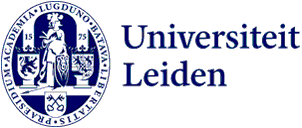Lecture
LUCDH Lunchtime Speaker Series: What Use are Networks Anyway?
- Date
- Tuesday 10 October 2023
- Time
- Explanation
- Tuesday, 10 Oct 2023 at 12:00 – 13:00 (CET)
- Address
- Digital Lab in P.J. Veth 1.07 and Online via Kaltura
- Room
- Please register via form below
What Use are Networks Anyway? Using Statistical Models to Understand Patterns in the Early Modern Book Trade
Please join us for our next LUCDH lunchtime talk presented by Dr. Yann Ryan on Tuesday, 10 October 2023 at 12:00 – 13:00 (CET).
Network analysis is widely used in the digital humanities. Network patterns are found again and again right across the social and natural worlds. Relatively easy to grasp and create, networks can be tempting to the researcher as they purport to replicate the messy complexities of humanities data. Complex network diagrams can give an illusion of understanding, and we look at them in the hope of finding deep and fundamental patterns.
But besides a few notable exceptions, network science in the humanities has provided disappointing results, certainly in relation to its popularity. In humanities data, which is often incomplete and collected in idiosyncratic ways, networks have a tendency to replicate the shape of the data or the underlying archive, rather than provide us with much explanatory power. Though easy to visualise using off-the-shelf software, the resulting ‘hairballs’ are impressive for their complexity but often tell us little about the data itself which we couldn’t find out using simpler methods.
In this lecture, I’ll argue that for some types of data, a network representation is hugely beneficial, if used correctly. As a case study, I’ll apply this thinking to the study of an inherently ‘networked’ world: that of early modern book publishers, who as a group worked together in complicated and changing partnerships. I’ll start with a fairly simple question: did publishers with connections to Scotland tend to work together when they moved to London?
To understand the publishing patterns of the early modern book trade in a statistically meaningful way, we need to take into account the inherent tendency of groups, business partners, and individuals to ‘cluster together’: the phenomenon that a friend of a friend is often also a friend. I’ll show how representing data formally as a network and modelling it using a special class of statistical models called Exponential Random Graph Models (ERGMs) allows us to take this into account. In this way, we can use networks to help explain the underlying reasons behind certain clusters and connections, and even use them to predict links which might be lost due to missing or partial data. I’ll argue that for certain types of inherently-connected data, a network approach is a key—perhaps even essential—tool to come to a full understanding.
Any questions contact: lucdh@hum.leidenuniv.nl
Register with this link.